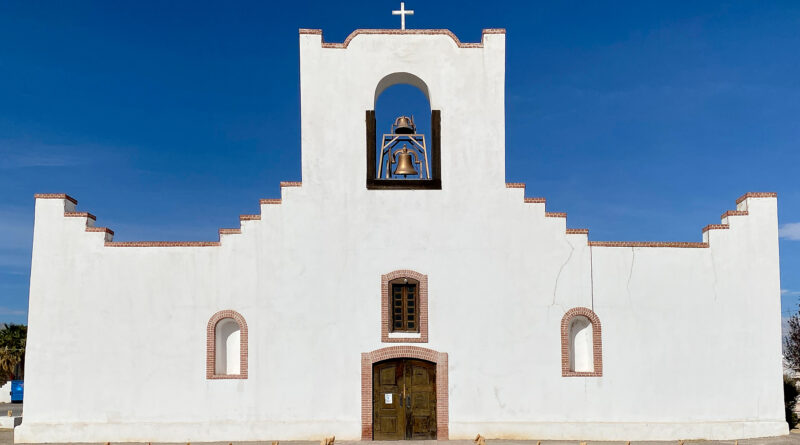The El Paso Texas Mission Trail: A Journey Through Time
The El Paso Mission Trail is a historic corridor that stretches approximately nine miles along the Rio Grande in El Paso, Texas. This trail is home to some of the oldest missions in the United States, showcasing a blend of Spanish, Native American, and Mexican cultures. The trail includes three main missions: Ysleta Mission, Socorro Mission, and San Elizario Chapel. Each of these missions tells a unique story of the region’s rich history, from its indigenous roots to its role in the Spanish colonization of the Americas.
Early Indigenous Inhabitants
Long before the arrival of Spanish explorers, the area now known as El Paso was inhabited by various indigenous peoples, including the Tigua, Piro, and Manso tribes. These groups lived in the fertile Rio Grande Valley, relying on the river for agriculture, fishing, and trade. Their settlements and culture laid the groundwork for the area’s later development.
Spanish Exploration and Colonization
The Spanish exploration of the El Paso region began in the late 16th century, with expeditions led by explorers such as Juan de Oñate in 1598. These early expeditions sought to expand Spanish territory, find new routes to the Pacific, and convert indigenous populations to Christianity. The establishment of missions was a crucial part of this effort, serving as centers for religious instruction, cultural assimilation, and economic development.
Ysleta Mission
The Ysleta Mission, founded in 1680, is the oldest continuously operated parish in the state of Texas. Originally established by Spanish Franciscan missionaries, the mission was intended to serve the Tigua people who had been displaced by the Pueblo Revolt in present-day New Mexico. The mission was relocated to its current site in 1691 due to flooding.
The Ysleta Mission’s adobe structure, white façade, and distinctive bell tower make it an iconic landmark. Over the centuries, it has undergone numerous restorations, but it remains a testament to the resilience and faith of the Tigua people and the early Spanish missionaries. The mission is still an active parish, serving as a spiritual and cultural hub for the local community.
Socorro Mission
The Socorro Mission, also established in 1680, was built by Piro, Manso, and Tigua refugees fleeing the Pueblo Revolt. Named Nuestra Señora de Limpia Concepción de Los Piros de Socorro del Sur, the mission played a crucial role in the survival and integration of these displaced communities. The mission’s name, “Socorro,” meaning “help” or “aid,” reflects its foundational purpose.
The Socorro Mission features a unique blend of architectural styles, including Spanish Colonial and Native American influences. Its thick adobe walls, carved wooden beams, and intricate altarpieces are a testament to the collaborative efforts of the indigenous and Spanish builders. Like Ysleta, Socorro Mission has been meticulously restored and remains an active place of worship and cultural preservation.
San Elizario Chapel
San Elizario Chapel, built in 1789, is the youngest of the three missions on the El Paso Mission Trail. Unlike Ysleta and Socorro, San Elizario was not originally intended to serve as a mission. Instead, it was established as a presidio chapel for Spanish soldiers stationed at the nearby fort of San Elizario. The chapel was named in honor of Saint Elzear, a 13th-century French nobleman.
The chapel’s architecture reflects its military origins, with a simple yet elegant design. Its whitewashed adobe walls, arched doorways, and wooden roof beams create a serene and welcoming atmosphere. Today, San Elizario Chapel is part of the San Elizario Historic District, a vibrant community that celebrates its rich cultural heritage through festivals, art galleries, and historical reenactments.
The El Paso Mission Trail Today
The El Paso Mission Trail is more than just a collection of historic buildings; it is a living testament to the enduring legacy of the region’s diverse cultures. Each year, thousands of visitors come to the trail to explore its missions, learn about the area’s history, and experience the unique blend of traditions that define El Paso.
Efforts to preserve and promote the El Paso Mission Trail have been ongoing for decades. Local organizations, historical societies, and community members work tirelessly to maintain the missions and educate the public about their significance. These efforts have been instrumental in ensuring that future generations can continue to appreciate and learn from this vital piece of American history.
The trail also hosts numerous cultural events and festivals throughout the year, including the annual Ysleta Mission Festival and the San Elizario Historic District ArtWalk. These events provide opportunities for visitors and locals alike to celebrate the area’s heritage through music, dance, art, and traditional cuisine.
Conclusion
The El Paso Mission Trail is a journey through time, offering a glimpse into the rich history and cultural diversity of the El Paso region. From the resilience of the indigenous peoples to the determination of the Spanish missionaries, the trail’s missions stand as enduring symbols of faith, community, and cultural exchange. As the trail continues to be preserved and celebrated, it remains a vital link to the past and an inspiration for the future.
Discover more from City Towner
Subscribe to get the latest posts sent to your email.




